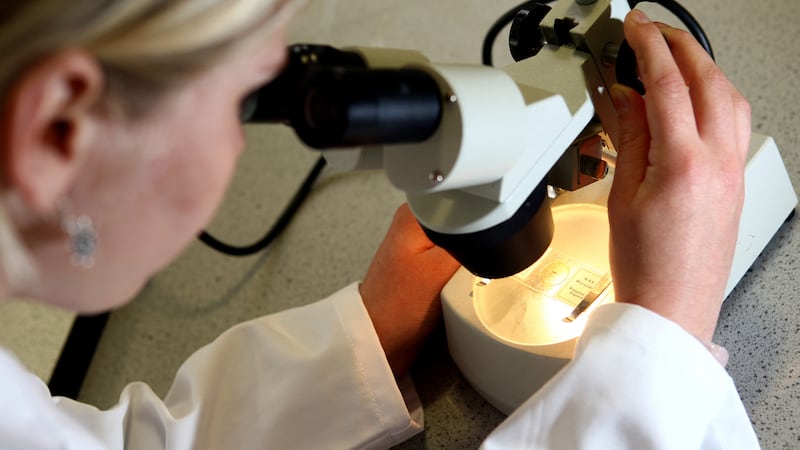THE grass on the steep hillside is slippery with morning dew as I make my way carefully up the badly defined path.
Although dawn has still not broken and a blanket of cloud is cast across the sky, the light of a full moon bathes the hillside in a bluish hue.
Beside the rocky, domed hump at the top of the hill two other people are already waiting.
It is 6.15am on September 20, the weekend of the autumn equinox, and I am standing in front of a 5,000-year-old cairn at Loughcrew in Co Meath.
It is not as famous as Brú na Bóinne, home to Newgrange, Knowth and Dowth, which date to around the same era.
While the passage tomb at Newgrange is aligned to receive the rays of the rising sun on the winter solstice (December 21), Loughcrew is illuminated twice a year during the spring and autumn equinoxes when day and night are equal length. There is a padlocked gate over the passage that leads into centre of Loughcrew but it is opened for the equinoxes and the days either side when the rising sun also shines directly in. Standing on a moonlit hillside beside a 5,000-year-old monument at an ungodly hour, it is fairly easy to start a conversation with complete strangers who by being there obviously share a common interest.
No, I haven't been at Loughcrew before for an equinox sunrise, I say, but I have been inside and describe the ancient carvings at its centre.
But I am quickly out-gunned - one of my new friends has been inside Newgrange for the winter solstice - twice. That is a big deal among the sort of people who like to hang out around Neolithic burial mounds.
the first time the sky was overcast but the second he saw it lit up in its full glory. This was 20 years ago, he explains, before the only way to get into Newgrange for the solstice was to enter a lottery along with 30,000 other people for just a handful of passes.
More people start to arrive and I fall into conversation with a photographer from the area who points out other prehistoric sites on the Slieve na Caillaigh hills and where the countryside dips towards the River Boyne.
the gate is opened and I am one of the first to go in to the small central cruciform chamber, along with the man who saw the solstice at Newgrange.
With torches we examine the carvings etched into the large flat stones set in alcoves around the central chamber. There are the familiar triple-spirals, also found at Newgrange and Knowth, chevrons and wavy lines, but the most startling carvings are a series of flowers, as if this ancient pagan site had been decorated by
5,000-year-old hippies. There is only room for five or six people in Loughcrew's central chamber and as no piercing shaft of light has broken through I push back out to allow others in. The eastern horizon is brightening into an orange strip but the sun is hidden behind stubbornly unshifting cloud. There are about 20 people around the cairn now, all of them staring wistfully at the unspectacular sunrise.
I start talking to an English woman but when I point out the man who has seen the winter solstice inside Newgrange I find myself almost immediately sidelined as she all but shoulders past to go and talk to him.
Back inside the passage tomb there are just two others. Suddenly a section of the back wall of the chamber takes on an other-worldly glow that flickers as if it is about to burst into flames, until it suddenly disappears. There is someone standing in the passageway taking pictures and blocking the sun.
We collectively tell him to get out of the way and again the eerie glow bathes the back part of the chamber for about two minutes before it fades. We all look back angrily towards the passage expecting to see someone else standing there but it is clear. The clouds have thickened once again to hide the shaft of morning sunlight.
A spanish man comes in and starts to meditate. Everyone else stares intensely at the back wall, hoping for a another solar illumination of the ancient carvings. The Spanish man chants 'Om'. Still nothing.
Oh well, there's always the spring equinox or, hope against hope, my name might come out in the Newgrange lottery.
t.bailie@irishnews.com
n Fionnuala O Connor is away.

